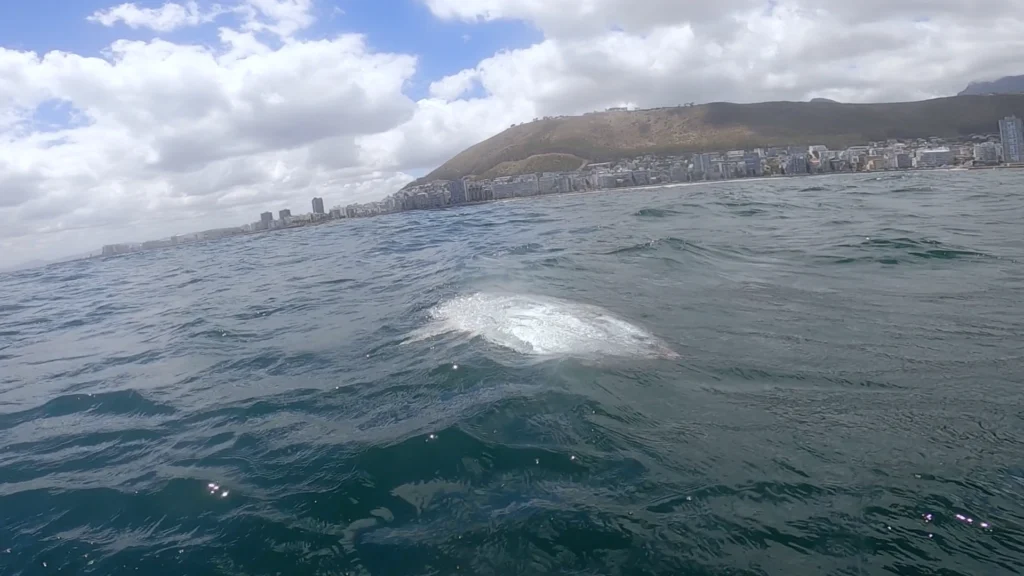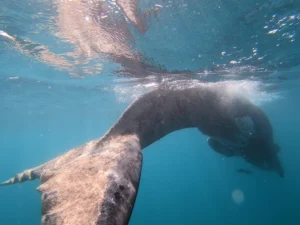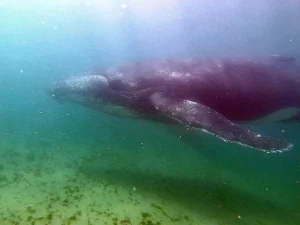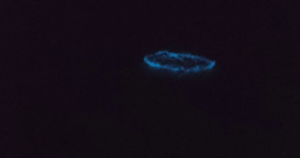The Ocean sunfish is also commonly called the Mola or Mola mola. The Latin word ‘mola’ means millstone and is in reference to this fish’s peculiar round, grey shape which looks like a millstone. Its name in many other languages either translates to ‘sun’ or ‘moon’, while the funniest is one of its German names “Schwimmender Kopf”, meaning ‘swimming head’. The Ocean sunfish and Southern sunfish are the two heaviest known bony fish in the world and average between 267kg and 2000kg. There are 5 species of sunfish namely; the Sharptail mola, Southern sunfish, Slender sunfish, Hoodwinker sunfish and the Ocean sunfish. All of the sunfish species are found in tropical and temperate waters and four have been found in all five oceans. The sunfish in these photos and video is an Ocean sunfish which Daniela encountered off the Atlantic Seaboard. They are quite common in this area especially in the summer months. In fact, all five species of sunfish have been seen here in Cape Town.
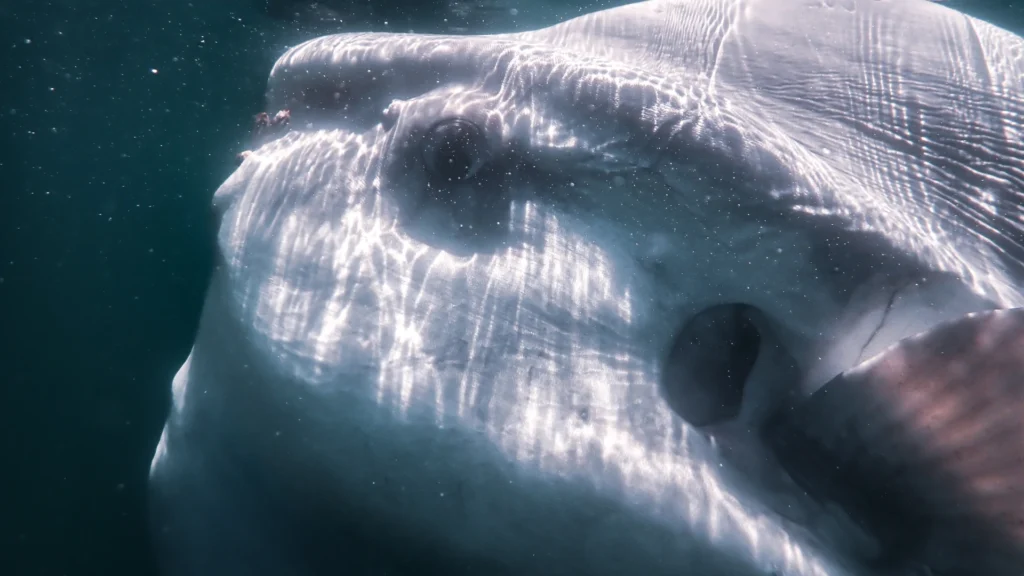
Female sunfish produce more eggs than any other vertebrate, up to 300 million eggs at a time! Their fry look like mini pufferfish with body spines, large pectoral fins and a tail fin. Not surprising then, sunfish are a member of the order Tetraodontiformes which includes pufferfish, porcupinefish and filefish. The fry grow quickly and reach 60 million times their original fry weight on reaching adulthood. Juveniles have a rounded tail which becomes scalloped as they grow into adults. It takes about 20 years for a Mola mola to reach its full size. Its skeleton is largely made of cartilaginous tissues which is lighter than bone and this is what allows it to grow to sizes other bony fish cannot achieve. Its teeth, which you can see clearly at 0:09 in the video, are fused and look like a beak similar to a parrotfish. It also has spiky, pharyngeal teeth in its throat. Sunfish are generalist predators and feed on small fish, squid, crustaceans, sea jellies and salps. They dive to average depths of 90m to 170m for their food and have been observed diving to 644m. They can dive up to 40 times a day, but must return to the surface to warm up after spending so much time at those cold depths. The deepest a human has freedived and survived is 253 meters which was achieved by Austrian freediver, Herbert Nitsch. Unfortunately he suffered injuries following the dive due to decompression sickness.
Many surfers have had traumatic ‘shark experiences’ thanks to the Ocean sunfish. They often swim near the surface with their dorsal fin sticking out, looking a lot like a large shark fin. The motion of the fin is a good indication of whether it is a sunfish or a shark. A shark’s fin will glide through the water in a straight line while a sunfish has a swinging motion. Most surfers don’t stick around long enough to check for the differences though. Sunfish are, unfortunately for them, full of parasites. Up to 40 different species of parasites have been found on a single Mola mola. To get rid of these unwelcome guests, sunfish bask on their sides at the surface and allow seabirds and certain fish to clean them. Sunfish can move very fast when feeding or avoiding predators. They have also been seen vertically breaching the surface 3m high and crashing back into the water in an effort to knock some parasites off their skin.
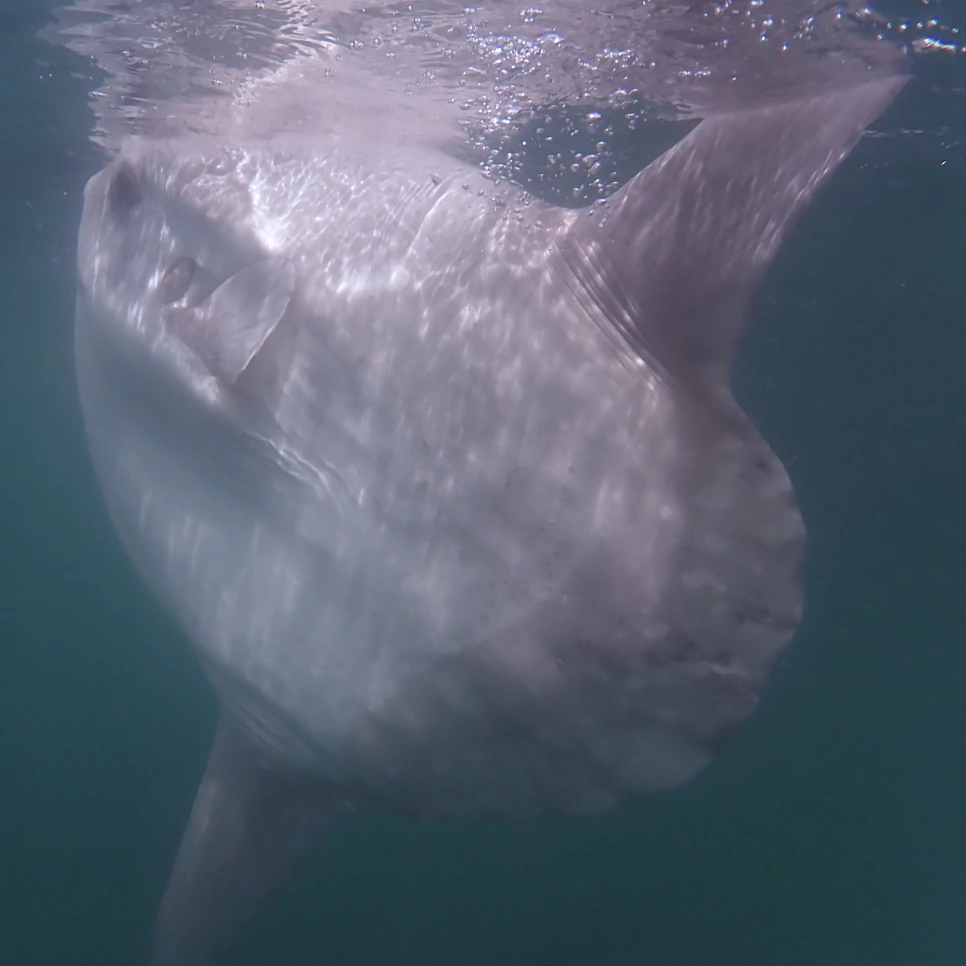
The sunfish does not have many predators, but tuna and mahi mahi hunt juvenile sunfish while orca, seals/sea lions and sharks are known to eat adult sunfish. Fortunately for the sunfish, its size and thick skin deter many other predators. Mola mola are eaten by humans in some regions, particularly Taiwan and Japan. However most other countries forbid the sale of sunfish products because they contain toxins harmful to human health. Unfortunately sunfish still suffer greatly from fishing but as a bycatch in longlines and gill nets. Quite sickeningly the bycatch rate of sunfish for the Mediterranean swordfish industry is as high as 90% of the total catch. In South Africa it is estimated that over 340 000 sunfish are unintentionally caught each year. Pollution also impacts sunfish greatly especially plastic bags which resemble jellyfish. This plastic pollution can immediately choke a sunfish or slowly starve them to death due to intestinal blockage.
